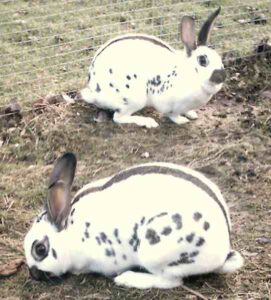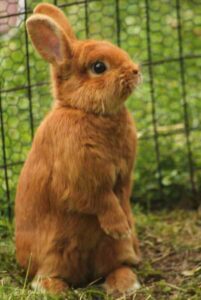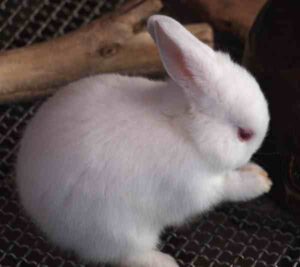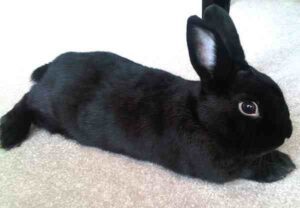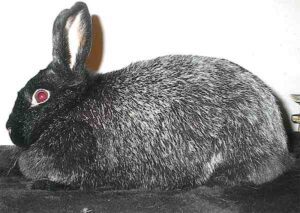Angora rabbit is one of the oldest domestic rabbit breed variety originating in Angora (today which is called Ankara), Turkey. The Angora is a variety, not a breed and was mainly bred for it’s long and soft wool.
Angora rabbit was very popular as pets with French royalty in the mid 18th century. And then spread to the other parts of Europe by the end of the century. In the early 20th century, the Angora rabbit first appeared in the United States and the breed was bred largely for it’s long Angora wool. It’s wool may be easily removed by combing, plucking or shearing.
There are many individual breeds of Angora rabbit variety. Such as Chinese, English, French, German, Korean, Swiss, Giant, Finnish, Satin and St. Lucian. But all the breeds are not recognized by the American Rabbit Breeder’s Association. Only four varieties are recognized by the American Rabbit Breeder’s Association, which are; French, English, Satin and Giant.
The German Angora rabbit is also a common breed. But it’s not recognized by the American Rabbit Breeder’s Association. Rather it has it’s own association, the IAGARB (International Association of German Angora Rabbit Breeders). Here we are shortly describing about four ARBA recognized Angora rabbit breeds.
Angora Rabbit Characteristics
The size of Angora rabbit vary depending on the type. On average, the typical breed is quite small and has a rounded appearance. They are mainly bred for their fine quality wool, which is silky and soft. Their wool is finer and softer than cashmere.
Depending on the type, their average body weight is between 2.0 and 5.5 kg or even larger. Physical characteristics vary depending on the type of Angora rabbit. So here we are describing about four ARBA recognized breeds.
English
English Angora rabbits are gentle in nature. But they require regular grooming. Their wool is very dense and needs to be groomed twice a week. So it’s not a recommended breed for those people who do not groom their animals regularly.

English Angora rabbit is the smallest breed of the four ARBA recognized breeds. And it is the only rabbit breed which has hair covering it’s eyes.
ARBA accepted English Angora rabbit varieties are; agouti, broken, self, shaded, ruby-eye white and pointed white. It’s average body weight is about 2.0-3.5 kg. Photo from Wikipedia.
French
French Angora rabbits are larger in size with a commercial body type. It has a big under coat. And it differs from the English, German and Giant angora and it possesses a hairless face and front feet, with only minor tufting on the rear legs.

Their fiber has smooth silky texture, making it difficult to spin. Desirable characteristics of the French Angora rabbit’s fiber include it’s texture, warmth, light weight and pure white color.
ARBA accepted varieties of French Angora rabbit are agouti, self, ticked, wide band, pointed white, shaded and also it can be brown tones and broken. Average body weight of this breed is between 3.5 and 4.5 kg. Photo from Wikipedia.
Giant
Giant Angora rabbits are the largest in this variety recognized by the ARBA. They produce more wool than the Satin, English or French Angora. They mostly appear in ruby-eye white color.
They have a commercial type body with a very dense coat of wool. Their head is oval in appearance which is broad across the forehead and slightly narrower at the muzzle.

Their ears are lightly fringed and well tasseled, and they have forehead tufts and cheek furnishings. Ruby-eyed white is the only variety of Giant Angora rabbits recognized by the ARBA. Their average body weight is up to 5.5 kg. Photo from Wikipedia.
Satin
The Satin Angora rabbits are result of cross breeding between a Satin and a French Angora rabbit. They do not produce as much wool as other Angora rabbit breeds. Their wool should have a silky texture, high luster with good guard hair.

Agouti, shaded, self, sicked, pointed white and wide band are the ARBA accepted varieties. Average body weight of the Satin Angora rabbit is between 3.0 and 4.5 kg. Photo from Wikipedia.
Uses
These rabbits are mainly kept for their fine quality wool production. They are also good for raising as pets.
Special Notes
Most of these rabbits are calm and docile in nature. They are very lovable and intelligent creature. They are very friendly with humans and love to play if given enough space.
They even enjoy playing with humans. They should be handled carefully. Grooming is a must for them for preventing their fiber from matting and felting on the rabbit.
Average lifespan of Angora rabbit is about 7-12 years if kept indoors and well cared for. However, review full breed profile of the this rabbit in the chart below.
| Breed Name | Angora |
| Other Name | None |
| Type | Chinese, English, French, Finnish, German, Giant, Korean, Satin, St. Lucian, Swiss |
| Breed Purpose | Mainly raised for wool production, good as pets. |
| Breed Size | Medium to Large |
| English | 2.0-3.5 kg |
| French | 3.5-4.5 kg |
| Giant | 5.5 kg or larger |
| Satin | 3.0-4.5 kg |
| Suitable for Commercial Production | Yes |
| Good as Pets | Yes |
| Climate Tolerance | All Climates |
| Coat Color | Many |
| Rarity | Common |
| Country of Origin | Turkey |

